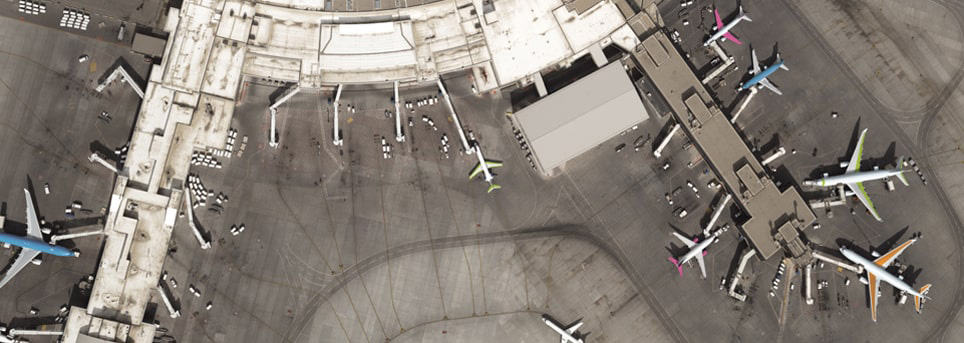The challenge
One of Europe’s busiest and most vital aviation hub airports, faced increasing pressure from sustained passenger growth. To ensure the airport could maintain its high standards of operational integrity and passenger experience, the national government requested that the airport validate its internal Capacity Analysis Process. A clear, evidence-based link was needed between the airport’s capacity analysis and its official capacity declaration.
A key emerging challenge was a growing trend of airlines substituting larger widebody aircraft for narrowbodies on their schedules, particularly during seasonal peaks. This shift placed unforeseen constraints on terminal facilities, baggage systems and aircraft stands, threatening to create bottlenecks throughout the passenger journey.
The airport needed an independent, end-to-end assessment to validate its own findings, identify specific pressure points, and provide a clear roadmap for managing capacity effectively in the short and medium term.
The solution
The hub airport engaged AiQ Consulting to undertake a comprehensive, two-phase study. The objective was to examine and validate the airport’s existing capacity analysis processes and identify any areas that might require new scheduling limits to maintain operational performance.
Using a structured, data-driven methodology, AiQ conducted a holistic analysis of the entire airport ecosystem. The assessment covered every key passenger and aircraft touchpoint, including:
- Kerbside and landside access
- Check-in halls
- Security and emigration filters
- Departure lounges and gates
- Baggage make-up, transfer, and reclaim systems
- Arrivals and immigration
- Aircraft stands and apron movements
Central to the analysis was AiQ’s bespoke simulation modelling tool, TransvisionAiR™. This powerful software created a dynamic digital twin of the airport’s operations, allowing the team to model complex passenger, baggage and aircraft flows based on predicted schedules and real-world data. By simulating peak day scenarios, AiQ could accurately measure queue lengths, waiting times, and resource utilisation against internationally recognised IATA Level of Service (LoS) standards.
The analysis revealed several key findings:
- Check-in & Security: Specific check-in zones and security filters were identified as being under-resourced during peak hours, leading to sustained periods of delay and crowding.
- Baggage Systems: The study highlighted a shortage of baggage make-up space in key halls. AiQ recommended implementing operational strategies such as “compressed build” to optimise the use of existing infrastructure and increase throughput.
- Immigration & Reclaims: Significant capacity shortages were confirmed in multiple immigration filters and baggage reclaim halls, with waiting times exceeding IATA standards during peak arrival banks.
- Aircraft Stands: The analysis confirmed that widebody aircraft stand capacity was a critical constraint, particularly during a concentrated morning peak. This validated Schiphol’s initial concerns and provided the evidence needed to consider imposing limits to protect service quality.
The benefits
AiQ’s independent capacity analysis delivered significant value to the airport by providing clarity, confidence and a clear path forward.
- Independent Validation and Confidence
- Data-Driven, Prioritised Action Plan
- Proactive Capacity Management
- Enhanced Operational Efficiency
- Robust Framework for Future Growth
- Independent Validation and Confidence: The study’s results showed no significant differences from the airport’s own ICP findings. This provided a powerful, independent validation of the airport’s internal processes, building a high degree of trust for both internal stakeholders and the national government.
- Data-Driven, Prioritised Action Plan: The airport received a detailed, evidence-based assessment of its capacity constraints, color-coded to indicate severity. This allowed the airport to focus its resources and operational interventions on the areas of greatest need, from check-in and security to baggage and stands.
- Proactive Capacity Management: The findings enabled the airport to move from a reactive to a proactive stance on capacity management. The report provided the justification to act on capacity measures sooner in the planning cycle, helping to avoid the need for last-minute operational fixes during seasonal peaks.
- Enhanced Operational Efficiency: AiQ identified opportunities to unlock hidden capacity through smarter operational procedures, such as optimising baggage handling and introducing dual-use reclaim belts. These recommendations offered a way to improve performance without immediate, large-scale capital investment.
- A Robust Framework for Future Growth: By providing a thorough analysis and recommending updated modelling assumptions, AiQ equipped the airport with a more robust and accurate framework for future capacity planning, ensuring it is well-prepared to manage evolving airline schedules and continued growth.
AiQ’s award winning team
Our operational and analytical experts are dedicated to analysing, modelling and optimising every aspect of an airport. Specialising in airport capacity, we are trusted to realise capacity and solve complex operational challenges. For more information about how we can assist with any of your challenges contact us today.

